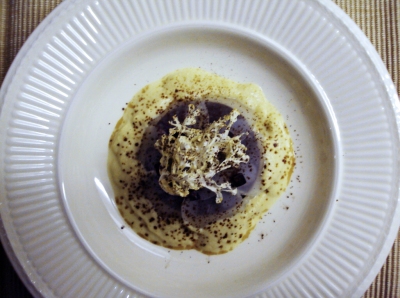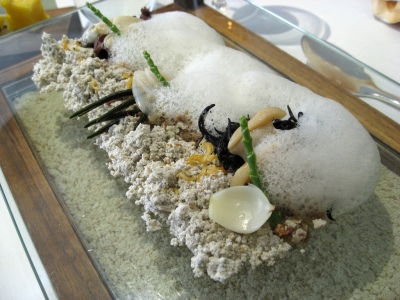Well, this is it. I never intended to write a final post on how this blog changed me personally, and what I’m going to do next, and am sticking to that feeling. So, goodbye.
Ok, that may be a bit harsh, but when starting and keeping up this blog I tried to stay away from (not saying I was successful all the time) hundreds of exclamation marks, a super friendly attitude that seems to exist only on blogs, feelings of the day and endless personal paragraphs on ingredients at the beginning of posts. If I would have to summarize why I started this blog it comes down to a ‘big fuck you’. A fuck you to the endless cooking shows and cookbooks making everything ‘easier’. Those shows where someone chops half an onion and 1 second later has cut 10 of them. Or someone using pan after pan and then not show the enormous clean up afterwards. It’s all so easy! Yes that’s an exclamation mark. My life would indeed be very easy if I could edit it to will and remove, like Hitchcock said, the dull bits. I cook simple food most of the time, but what’s wrong with more challenging stuff from time to time and the Roux brothers guiding you through your attempts.
Lastly, my blog is a fuck you to the word ‘impossible’.
Now it may seem I’m some angry guy, but next to a pissed off reaction to a part of the contemporary food world, I started this blog out of love. The moment The Big Fat Duck Cookbook arrived at my doorstep I had a crush on it. I still lovingly caress it from time to time. It has so much soul, I just had to cook from it. For me it’s the exact opposite of the Alinea cookbook for example, which I find derived of any type of personality.
When I translated my love for the book in actual cooking I thought why not document my attempts, so someone else may have some help seeing my results. I hope it did.
Now that the book is finished I’ve been getting a lot of questions what’s up next. I can safely say I will not start another cookbook blog. I loved cooking from the Fat Duck Cookbook, but am sort of relieved the days of a permanent Fat Duck space at the back of my mind are over. Days of just messing around with food are here again. Lately I’ve been cooking from the Momofuku cookbook, a book I love for the same reason I love The Fat Duck Cookbook, it possesses tons of soul, in an attempt to get more familiar with the flavors of China, Japan and South Korea. I no longer want to be clueless when standing in a Japanese produce store and wonder what all those brightly colored packages contain. So, my plan was as simple as when I just started cooking. Grab a book (am not ashamed to admit they were from a certain Mister Oliver the first time around), pick out recipes and just make stuff. So far I made pork buns, rice cakes, kimchi, all the stuff for a bowl of ramen minus the actual noodles, XO sauce and more.
So, I’m just going to continue cooking and who knows what will come of it.
With the final words I want to thank my family and friends that helped me in my endeavor. Thanks! Also a thank you to all of you commenting on the posts.
Later.



